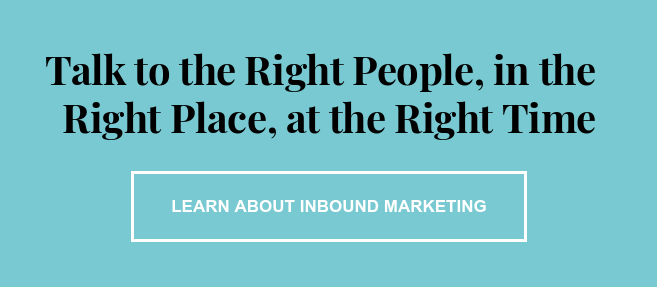In an age when you can personalize anything from your phone background to your skincare routine, you should be able to personalize your marketing strategy… right? Inbound marketing does just that; personalizing market strategies to reach potential buyers instead of hoping for the best.
Inbound marketing is a strategy and practice coined by HubSpot in 2006, which has opened many doors for the sales and marketing world since its creation. Inbound marketing has really taken off since then and has proven to be a successful route of marketing.
INBOUND MARKETING, EXPLAINED
Inbound marketing takes traditional marketing and flips it inside out. There are aspects of traditional marketing that make sense and create positive outcomes, but since inbound marketing has surfaced, it shows traditional methods take advertisements and try to outwardly push them to any audience that will receive them. The problem with that is that most people won’t want to receive those messages if they aren’t in the market for those specific services.
.png?width=319&name=inbound-methodology%20(1).png)
We’ve all been on a website or watching television and been served an advertisement for something that simply did not pertain to us or our interests. Almost every time, we ignore that content and move on with our day. This would be considered a traditional marketing tactic. It’s hard to grab someone’s undivided attention when they aren’t seeking that information out.
Inbound marketing suggests using marketing tactics based on your customer and potential customer base, and owning the spaces you can control. Aspects of your marketing, blog, social media, etc. become a more strategic avenue for attracting business. If you use these outlets to create and share intentional messages and helpful information, you’ll make great progress toward inbound marketing success.
INBOUND VS. OUTBOUND (TRADITIONAL) MARKETING
What’s the big hype around inbound marketing? Does it really have more pros over traditional marketing methods?
While inbound marketing utilizes owned and earned media, traditional marketing tends to solely focus on paid media routes. By using inbound strategies, it creates an open channel for customers to seek your business out, not the other way around.
Traditional marketing pays for advertisements and spaces for sponsoring. This different from inbound because it means you’re “forcing” material or information onto individuals, rather than expecting them to come to you. By organically allowing customers to seek your business out, it can result in longer customer retention, better long term results, and increased buyer trust.
Compared to outbound marketing, inbound marketing offers value to the customer. Take blogging, for example. If your business writes a credible and regularly updated blog, it will give the customer something to rely on and help answer their questions. This is more helpful compared to traditional routes because it speaks to potential customers needs and answers their questions as they arise. They won’t be obligated to take any action right away which will help build a working relationship, as opposed to just a means of service. Over time, they’ll see you as a trusted, knowledgeable resource to help them solve their problems.
BENEFITS OF INBOUND MARKETING
Inbound marketing showcases the benefits of focusing on things like a well-planned business website, frequently updated social media accounts, targeted video content, downloadable offers, and blogs.
Providing a trustworthy and interesting website for your business is a giant first step. If you update your social media, blogs, and Youtube channel frequently, it will give potential customers a reason to click to your landing pages. This works because you’re persuading people to go to your website based on trustworthy information, not offering arbitrary services that they might not need.

Another benefit of inbound marketing is that it gives potential customers the freedom to draw their own conclusions about their need for your services and business as a whole. Giving the customer this freedom eliminates the promotion of unneeded services which may help develop valuable business-to-buyer relationships.
A benefit that can be used directly within a business’s improvement and analysis is the usage of social media listening. By having a presence on the major social media platforms that make sense for your customers, it can give your business the advantage of being able to engage immediately with individuals., Customers love to know they can interact with you and express opinions about your products or services - and be heard.
WHERE TO GO FROM HERE
When starting out, inbound marketing might seem a little daunting. You might be asking yourself where to even start? Consider these facts and statistics when deciding where to begin and what to put the most time and energy into.
Hubspot’s 2019 Marketing Statistics page gives very good insight into the matter.
- Consider starting with a strong Youtube page because more than 50% of consumers prefer video content.
- Avoid paid advertisements - around 47% of internet users utilize ad blockers.
- 86% of consumers prefer an authentic and honest brand personality on social networks. Put in the effort on social media platforms, and you will gain trust from customers.
- Marketers who prioritize blogging efforts are 13x more likely to see positive ROI. This means having a blog really does matter! Try it out.




